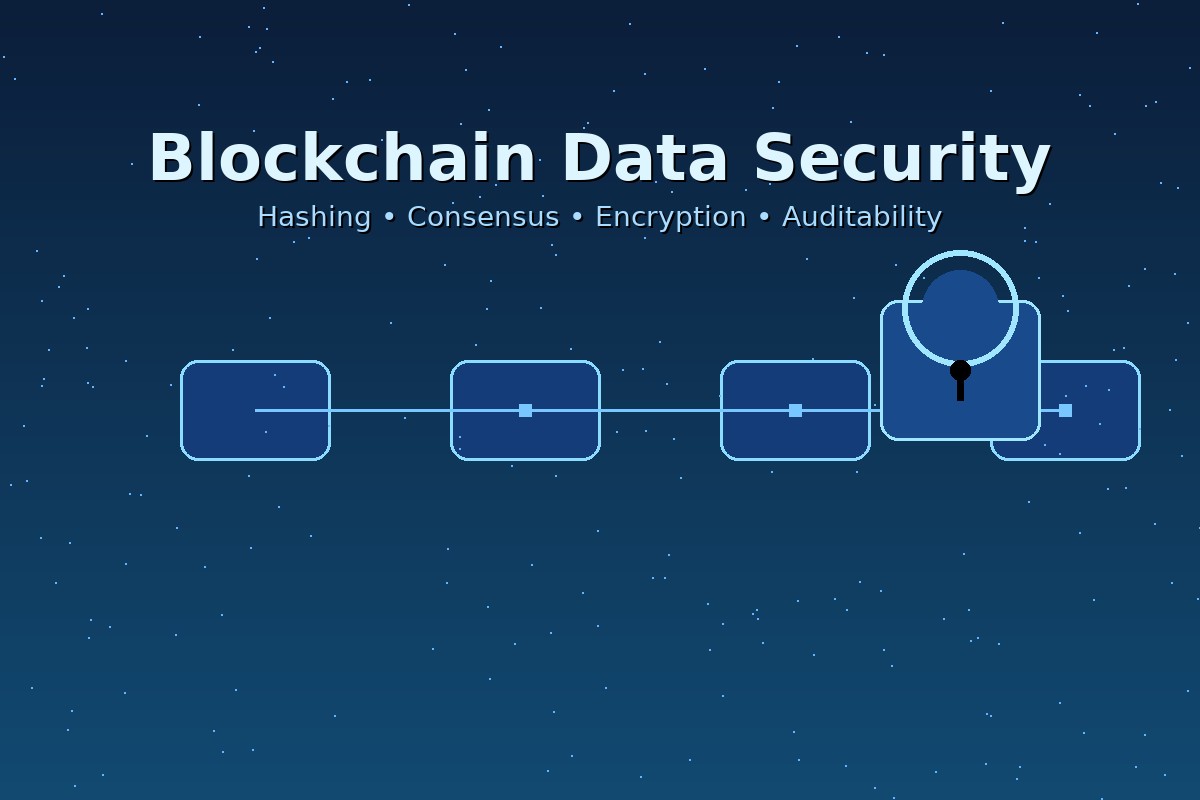How Blockchain Ensures Security: A Simple Guide to Data Protection

How blockchain ensures security is one of the most important questions in digital technology today. Blockchain protects data through linked records, cryptography, and decentralized consensus. These features make it extremely difficult for hackers or insiders to alter or delete information.
1. Why Blockchain Security Matters
In traditional databases, one administrator controls all the data. If that system fails or gets hacked, all records are at risk. How blockchain ensures security is different—it spreads control across many computers, called nodes. Every node keeps a copy of the ledger, which prevents tampering and improves trust.
2. Hashing: Protecting Data Integrity
Each blockchain block has a hash, a digital fingerprint that changes if the data changes. Every block also stores the previous block’s hash, creating a secure chain. If a hacker changes one record, the entire chain shows the difference. That’s a key part of how blockchain ensures security—tampering becomes obvious to the whole network.
3. Immutability and Transparency
Data written to a blockchain cannot be erased. New information can only be added through verified transactions. This immutability builds transparency and auditability. Companies can show customers or regulators that data has not been changed. This clear record helps prove integrity—another part of how blockchain ensures security.
4. Consensus: Network Agreement
Before a new block is added, all nodes must agree that the data is valid. This process, called consensus, uses rules like Proof of Work or Proof of Stake. Attackers would need to control most of the network to cheat the system. That’s nearly impossible in large public blockchains, proving again how blockchain ensures security on a global scale.
5. Cryptography and Private Keys
Each user has two digital keys—a private key to sign transactions and a public key to verify them. Even if someone sees the public key, they cannot fake a signature. This cryptographic layer is one of the strongest answers to how blockchain ensures security against identity theft or fake approvals.
6. Decentralization: No Single Point of Failure
Unlike centralized systems, blockchain distributes copies of its ledger across thousands of nodes. If one node fails or tries to cheat, the rest continue to operate normally. Decentralization is essential for resilience, keeping data available even during attacks or outages.
7. Real-World Examples
Banks use blockchain to secure transactions, supply chains track products using blockchain records, and governments explore it for identity systems. In all these examples, how blockchain ensures security can be seen in real-world benefits—integrity, traceability, and trust.
8. Limitations and Best Practices
Blockchain is powerful, but it’s not magic. Developers must still secure private keys, audit smart contracts, and plan for scalability. Understanding how blockchain ensures security helps teams combine blockchain with other cybersecurity tools for the best protection.
Conclusion
To conclude, how blockchain ensures security comes from five principles—hashing, immutability, consensus, cryptography, and decentralization. Together, they create a tamper-proof system that keeps data safe and transparent. As digital systems grow, blockchain’s model for shared trust will continue to lead the way in secure innovation.